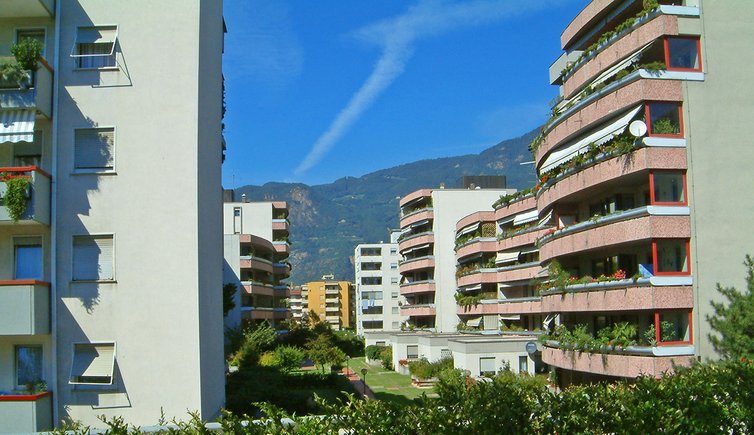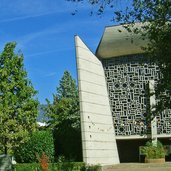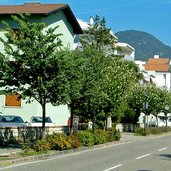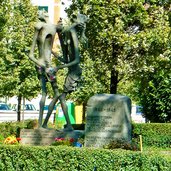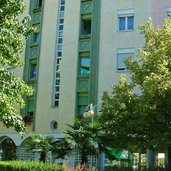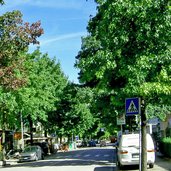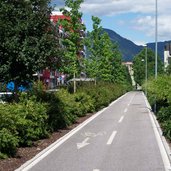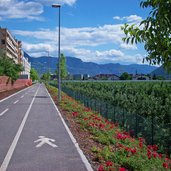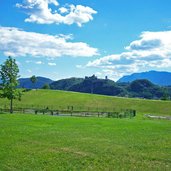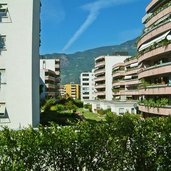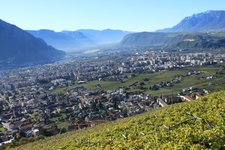The youngest city district of Bolzano is mainly composed of new buildings. This is also where the first large ClimateHouse settlement was constructed
Image gallery: Don Bosco
More than 100 years ago this area was completely composed of fruit orchards. In the 12th century there was an Augustine abbey which was destroyed in an earthquake and flooding of the Isarco, Talvera and Adige rivers. This abbey was reconstructed as the Muri Gries convent more in the north. Today the parish church Santa Maria in Augia stands where the former abbey was located once upon a time. In 1940 the fascist government constructed the quarter "Dux" in order to settle down Italian blue-collar workers who worked in the newly built industrial firms. "Dux" was part of the italianization strategy in the frame of Hitler's and Mussolini's agreement.
In the Nazi era (1943 - 1945), in Via Resia there was a transit camp in which Jews and members of resistance were herded together before they were deported to concentration camps. Still today a monument reminds on these horrible times. Up to the 70s and 80s the "semi rurali" constructions, which were built under Mussolini, endured. These houses were simple and small constructions with garden, enabling a life between city and nature, but they were jerry-built and not comfortable. In order to keep up with the rising population number, private principals and the provincial institute started to build modern apartment buildings. Today a museum reminds on the times of "semi rurali" buildings.
In the west of the Don Bosco quarter, extending up to the fruit orchards and Castel Firmiano, new settlements came into being: Firmiano and Casanova became huge apartment blocks which are, for the first time now, arranged in a climate efficient way. The Klimahaus concept, which has been developed in Bolzano, has been implemented in these buildings, vouching for higher life quality and a lower CO² emission.
